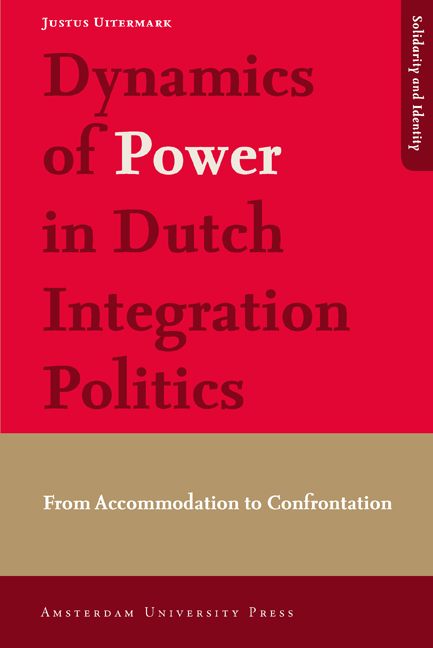4 - The Evolution of the Dutch Civil Sphere
Published online by Cambridge University Press: 15 January 2021
Summary
Culturalism has been a powerful force in the Netherlands since 1991, but it did not emerge out of thin air. To understand integration politics after 1991, we need to reconstruct the evolution of the Dutch civil sphere and the genesis of a policy field through which minorities were to be governed. How did power relations form in the civil sphere and how were these refracted in the policy field? This chapter answers this question through an examination of the proliferation and resolution of three formative conflicts in the Dutch civil sphere: the emergence and incorporation of Catholic and Socialist challengers in the early 20th century, the emergence and incorporation of new social movements in the 1960s and 1970s, and the Moluccan revolt of the 1970s and the subsequent inception of the minorities policy. Although these conflicts were very different, each was resolved through the accommodation of different interests and groups. The chapter concludes that the failure of the minorities policy to successfully accommodate immigrants in the 1980s prefigured the emergence of Culturalism in the 1990s.
Pillarization and Pragmatism
During the 17th century, a period often referred to as “the golden age” of the Netherlands, the Dutch Republic was a loose federation of provinces rather than a unified state (Gorski 2003). While the establishment of a monarchy in the 18th century and a constitutional monarchy in the 19th century centralized powers into a state apparatus, the distribution of power between religious groups (Protestants, Catholics) and class fractions (mercantile capitalists, landed nobility) was so even that it was impossible for any group to monopolize control and impose its view upon others. Due to this balance of power, transformations took the form of reforms rather than revolutions; when one or the other party gained power and sought to inscribe its discourse into state institutions, this usually resulted in accommodation rather than confrontation.
The creation of “pillarized” institutions was an example of such accommodation. In the last decade of the 19th century and the first decade of the 20th century, Catholics as well as Socialists challenged the hegemony of Protestants and capitalists. Because censitary suffrage and majority rule made it difficult for these groups to enter the parliamentary system, they increasingly organized outside of it.
- Type
- Chapter
- Information
- Dynamics of Power in Dutch Integration PoliticsFrom Accommodation to Confrontation, pp. 61 - 76Publisher: Amsterdam University PressPrint publication year: 2013



